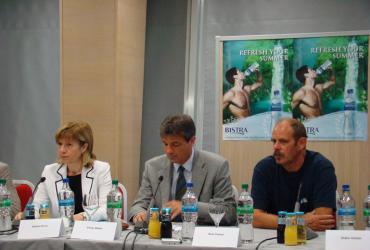The European Water Framework Directive (WFD) is possibly the world's strongest water legislation.
The WFD is legally binding for EU member states (including those in the Danube Basin) and is also being used by non-EU countries in the Danube Basin. Its goal is to ensure that rivers and lakes have "good chemical and ecological status" by 2015.
"Good chemical status" basically means that the water should be clean. The WFD defines five `classes´ for water status, from class I to V, with class I being the best. The classes are high, good, moderate, poor and bad.
However, it is not enough to only have clean water available for drinking without anything living in it. That is why the WFD also requires "good ecological status" whereby rivers and lakes have to provide good conditions, such as migration routes and suitable habitat, for natural species to live healthily. For example, many fish need natural sand banks for spawning - a habitat that may not be available along a fully engineered stretch of river, even though that stretch might have "clean water".
The WFD also requires countries to apply "river basin management" as the main tool to reach the objectives of the WFD, and to develop a "River Basin Management Plan" by 2009. This will spell out what "measures" the countries will take to reduce pollution and to restore and protect natural habitats where possible, to meet the WFD by 2015.
As an initial part of this process, EU countries had until 2004 to assess the degree to which water bodies within their boundaries were "at risk" of failing to meet the WFD's objectives in relation to four risk categories: organic pollution, hazardous substances, nutrients and hydromorphological alterations. The results showed that significant problems existed for which additional monitoring and actions are needed.
Today, the Danube countries, under ICPDR coordination, continue to be extremely busy with the production of the "Danube River Basin Management Plan". New information for this decision-making process was essential.
That is exactly why the JDS2 was needed - to bring a wealth of new information to the countries to help them better prepare and plan. And that is exactly what happened.
















